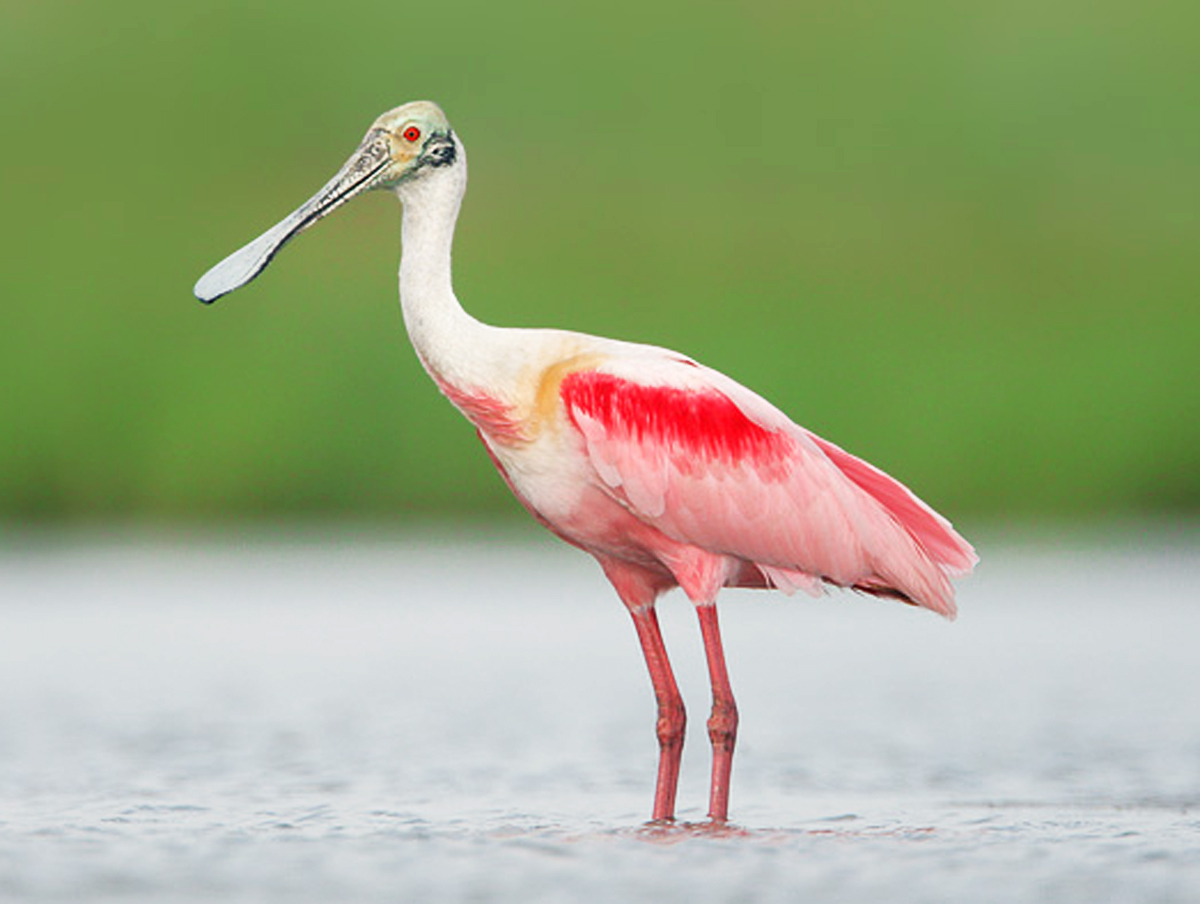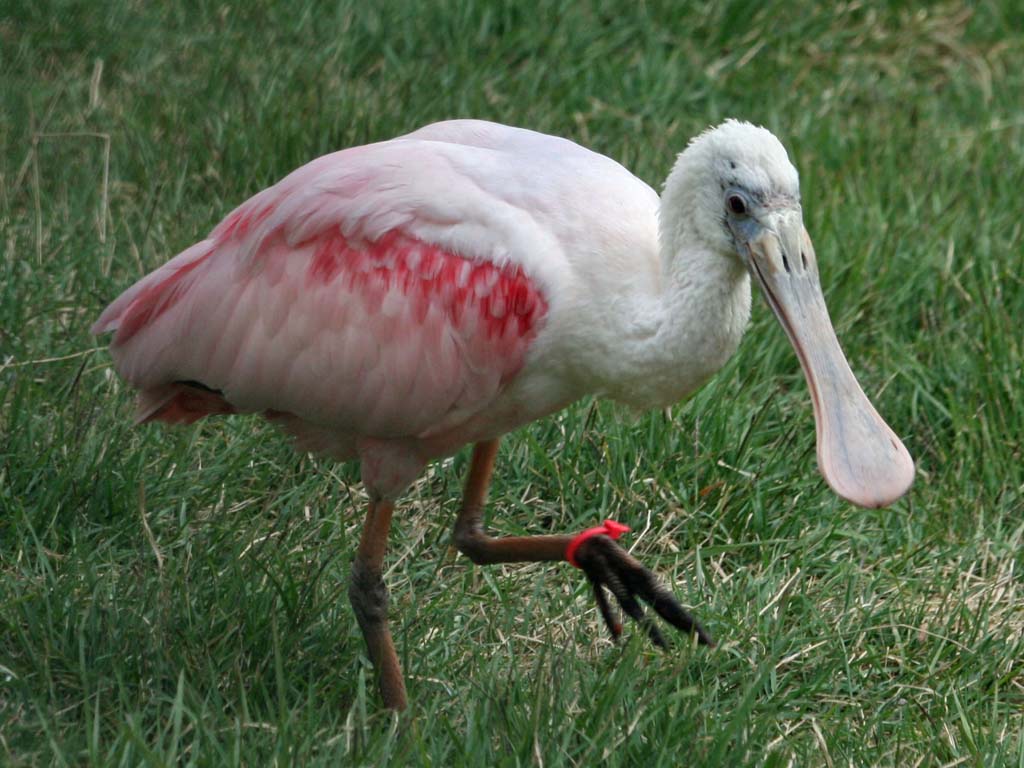
Platalea leucorodia
SUBFAMILY
Plataleinae
TAXONOMY
Platalea leucorodia Linnaeus, 1758, Sweden. Three subspecies.
OTHER COMMON NAMES
English: Eurasian spoonbill, common spoonbill; French: Spatule
blanche; German: Lцffler; Spanish: Espбtula Comъn.
PHYSICAL CHARACTERISTICS
27.5–37.5 in (70–95 cm); 3.3 lb (1,500) g. Overall white
plumage with varying amounts of yellow (from small patch to
ring) at the base of the neck. Crest of white feathers on the
back of the head. Black bill tipped in yellow and black legs.
Males somewhat larger than females.
DISTRIBUTION
Has the largest modern range of any species in its family.
Found across the Eurasian mainland, from the Atlantic coast of
the Netherlands east across the Caspian and Black Seas, over
most of China, to Mongolia, southern Siberia, and the Korean
Peninsula.
HABITAT
Marshes, lakes, ponds, rivers, lagoons, flooded areas, and
mudflats.
BEHAVIOR
Flies with the head and legs extended, using majestic, slow
beats of its wings. Groups may fly in single file or in a loose V
formation. Spoonbills rarely utter any cries. On the ground, it
often rests standing on one leg. It will swim for short distances
to reach suitable areas of shallow water.
FEEDING ECOLOGY AND DIET
Mainly insects, crustaceans, and fish. The spoonbill holds its
straight, flattened bill slightly open while foraging, sweeping it
through shallow water and picking up prey items disturbed by
the motion. Experiments have determined that the bill’s shape
lets it act as a hydrofoil, setting up water currents which affect
objects up to four inches (10 cm) away from the bill itself.
REPRODUCTIVE BIOLOGY
The spoonbill breeds, like most birds of the ibis family, in
colonies of varying size. Clutch size is about three to five
eggs. The young hatch after 21 days and are cared for by both
parents.
CONSERVATION STATUS
Not threatened. Some local pressures due to hunting and habitat
destruction.
SIGNIFICANCE TO HUMANS
None known.
Photo Gallery of - Spoonbill




 Animalia Life
Animalia Life